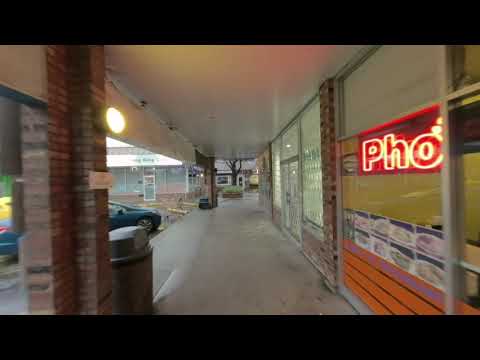In this test video, I used the Stayblcam Stabilizer with the Vuze XR in VR 180 mode (3d video) to test if the Stayblcam works well with the Vuze XR.
Please subscribe :) youtube.com/geoffmobile
This video is VR 180 which can be viewed in 3D using a VR headset such as the Oculus Quest 2. It can also be viewed on a desktop or phone.
The verdict? Yes, the combination of the Stayblcam and the Vuze XR works great. It even seems stable enough to view in VR for the most part (as long as the movement including turning or walking isn’t too quick).
I noticed there is an occasional large disruption to the stability that seems to happen during rotation, and seems to happen when suddenly and rapidly turning horizontally. This only happened once in the entire filming process of this video. It happens rarely enough that I would be able to work around it by editing out that segment. This seems to be an issue with the Vuze XR Studio software stabilization. It can be reduced or avoided by rotating or turning more slowly and also walking more carefully while using this stabilizer.
You can find out more about the Stayblcam Stabilizer here:
stayblcam.com/
You can find out more about the Vuze XR VR 180 camera here:
vuze.camera/camera/vuze-xr-camera
The main advantage of the Stayblcam Stabilizer is that it is purely mechanical and doesn’t require batteries. It is also compact and collapses into an easy to pack shape.
I also have a Guru 360 Stabilizer but it is much bulkier to carry and requires more effort to set up due to its system of weights and motors, as well as requiring more calibration.
You can achieve smoother results with an active stabilizer such as the Guru 360 Stabilizer but for me, the Stayblcam offers a lot of convenience and is fine for more casual shots such as vlogging, Youtube videos, and family videos.
When I ordered the Stayblcam a few years ago, I was originally using it with a Gear 360. At the time, the Stayblcam website had some fulfillment issues and I had to follow up with the company multiple times before they finally shipped my order. A lot of time has passed since then, and I notice that the Stayblcam is also available on Amazon (at least in Canada). So I would say that it is worth a try to order a Stayblcam if you like the results in this test video, because the product is really quite great and easy to use.
Like any passive stabilizer, the Stayblcam does take some practice to get used to it and to develop the right way to hold it that works the best for you. I would recommend watching the videos made by the Stayblcam company for tips on how to adjust and hold the Stayblcam while you are walking with it.
Although the instructions for Stayblcam say to hold the stayblcam horizontally with camera attached, pull out the base, and then adjust the top section to make the Stayblcam balance horizontally, I found this method didn’t work so well for the Vuze XR because it is a longer shape. I got better results by pulling out the base all the way, and then pulling the top section out a bit, to get the weight on the bottom to keep pulling the base downwards to encourage an upright position of the Vuze XR. That way, it tends to tilt less, and will reset to a perfectly vertical position automatically.
Workflow for this video:
Camera settings:
Vuze XR in VR 180 mode, full auto (no manual settings were used).
Vuze VR Studio was used to render the footage to VR 180 format, using 3D 180 (original), Apple ProRes 422, 120 Mbps, Alignment On, Stabilization set to “Shake and Horizon”.
Edited using Adobe Premiere.
White balance card use to calibrate WB in Adobe Premiere from start of the video (but it will drift due to Auto WB).
Audio is from the camera, with the W1 Limiter VST effect applied in Premiere to increase loudness.
Rendered for Youtube using H.264, 125 Mbps, high quality.
Any questions, please leave them in the comments.
Thanks!
Geoff
geoffmobile.com







Looks great Thanks Geoff.